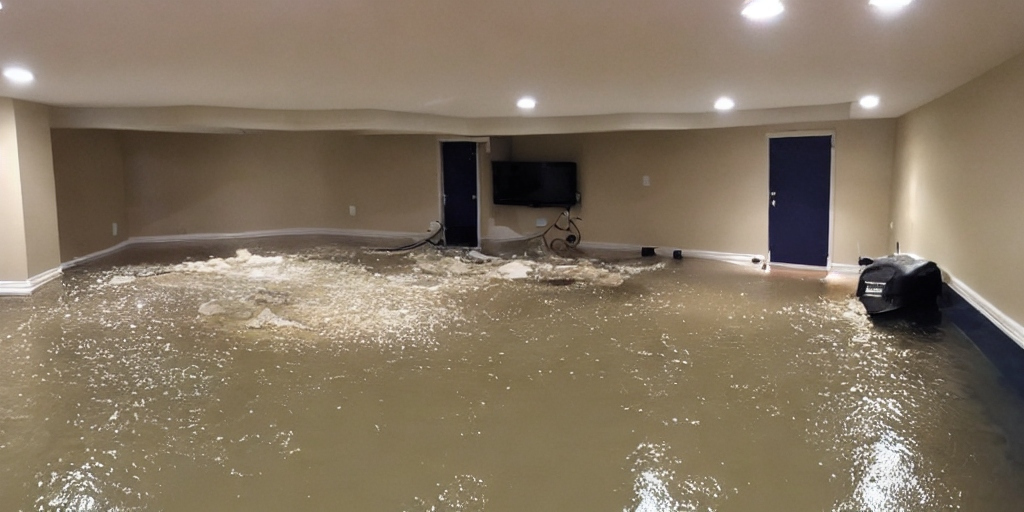Basement water damage can be a homeowner’s nightmare, leading to costly repairs and potential health hazards if not addressed promptly and properly. Whether it’s due to heavy rain, burst pipes, or a malfunctioning sump pump, a flooded basement requires immediate attention to prevent further damage. In this guide, we’ll walk you through the basement water damage cleanup process step by step, covering everything from initial assessment to restoration techniques.
Assessing the Damage
The first step in basement water damage cleanup is to assess the extent of the damage. This involves carefully inspecting the affected area to determine the source of the water, the amount of water present, and any potential structural damage. It’s essential to proceed with caution during this step, as flooded basements can pose safety risks such as electrical hazards and contaminated water.
Once you’ve assessed the damage, the next step is to remove the water from your basement. Depending on the severity of the flooding, you may be able to do this yourself using a wet/dry vacuum or a sump pump. However, for larger amounts of water or more extensive damage, it’s best to hire a professional basement water damage cleanup company.
Also Read: Basement Water Damage Cleanup: Tips to Restore Your Space
Removing the Water
If you’re tackling the basement water damage cleanup yourself, start by removing as much water as possible using a pump or a wet/dry vacuum. Be sure to wear protective gear such as rubber gloves and boots, as well as a mask to protect against airborne contaminants.
Once you’ve removed the majority of the water, use towels, mops, and sponges to soak up any remaining moisture. Pay special attention to areas where water may have seeped into walls, carpeting, or furniture, as these areas are prone to mold and mildew growth if not thoroughly dried.
Drying Out the Basement
After removing the water, the next step in basement water damage cleanup is to thoroughly dry out the affected area. This can be done using fans, dehumidifiers, and open windows to increase air circulation and promote evaporation. In some cases, it may be necessary to remove damaged materials such as drywall or carpeting to facilitate drying and prevent mold growth.
While drying out your basement, be sure to monitor humidity levels regularly using a hygrometer. Ideally, indoor humidity levels should be between 30% and 50% to prevent mold and mildew growth. If humidity levels remain high despite your efforts, consider renting or purchasing a commercial-grade dehumidifier to expedite the drying process.
Cleaning and Disinfecting

Once your basement is dry, it’s essential to thoroughly clean and disinfect the area to remove any remaining contaminants and prevent mold growth. Use a mixture of water and mild detergent to clean walls, floors, and other surfaces, paying special attention to areas that were submerged in water.
After cleaning, disinfect the area using a solution of bleach and water or a commercial disinfectant recommended for use on flooded surfaces. Be sure to follow the manufacturer’s instructions carefully and wear protective gear such as gloves and a mask while handling disinfectants.
Restoring the Basement
With the basement water damage cleanup complete, the final step is to restore your basement to its pre-flood condition. This may involve repairing or replacing damaged materials such as drywall, insulation, and flooring, as well as addressing any structural issues that may have contributed to the flooding.
If you’re not comfortable tackling these repairs yourself, consider hiring a professional basement water damage cleanup company to ensure the job is done correctly and safely. While the cost of professional restoration services can vary depending on the extent of the damage and the scope of the work required, it’s often well worth the investment to ensure your basement is restored to a safe and livable condition.
Also Read: Finding the best water restoration companies near me: A Comprehensive Guide
In conclusion, basement water damage cleanup is a complex and time-consuming process that requires careful planning and execution. By following the steps outlined in this guide and seeking professional help when needed, you can mitigate the damage caused by a flooded basement and restore your home to its pre-flood condition.










